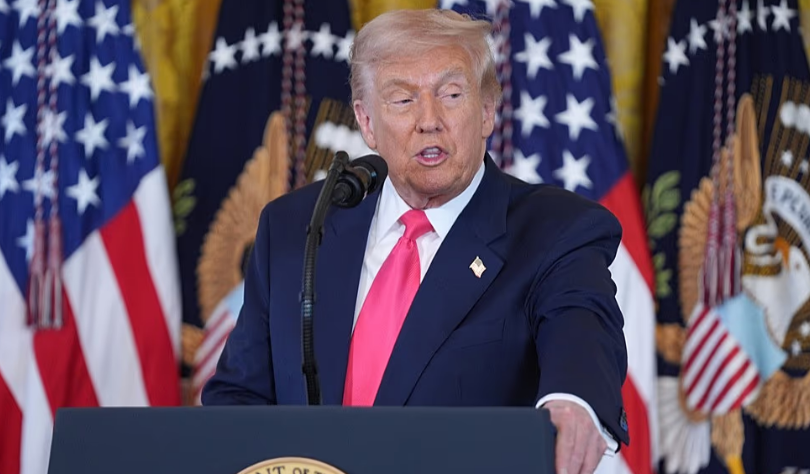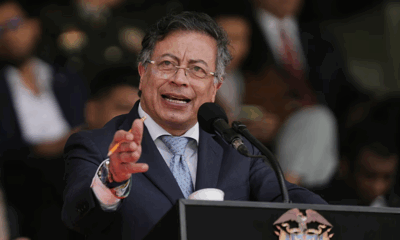News
Loy Krathong Festival to Illuminate Thailand with Tradition and History This November
As Thailand prepares to celebrate Loy Krathong on November 15, the annual festival will once again see thousands of people gathering by rivers, lakes, and ponds to release decorative floats, or “krathongs,” as an offering to the water goddess. Observed on the full moon of the 12th month in the Thai lunar calendar, this enchanting tradition is one of Thailand’s most beloved cultural events, attracting locals and tourists alike to experience the beauty of light and water.
Though Loy Krathong events take place across Thailand, the most significant celebration is held in Sukhothai, a UNESCO World Heritage Site and former capital of the Kingdom of Siam. Sukhothai’s week-long Festival of Lights features grand parades, fireworks, and light shows that transform the city’s ancient monuments, creating a dramatic display against the backdrop of historic temples and serene ponds. This immersive experience allows visitors to explore the city’s heritage with an unforgettable ambiance of celebration.
Sukhothai’s historical significance lies in its role as the first capital of Siam, dating back to the 13th and 14th centuries, before Ayutthaya became the new capital in 1438. The Sukhothai Historical Park, which houses well-preserved Buddhist monasteries and examples of early Thai architecture, draws visitors from around the world. Wat Mahathat, the centerpiece of the park, and Wat Si Chum, with its iconic seated Buddha, are among the must-see landmarks.
“The first impression for many tourists visiting Sukhothai is how peaceful it is, how the local lifestyle coexists harmoniously with the historical sites,” says Sirawee Lamsudjai, a cultural officer at Sukhothai’s Ramkhamhaeng National Museum. “The city has retained its charm and offers a unique glimpse into Thai culture and history.”
Sukhothai is also recognized for its innovations, particularly in water management. The ancient city’s hydraulic engineering system included a network of reservoirs, ponds, and canals that supplied water for agriculture, daily life, and religious rituals. UNESCO praises this early engineering as a testament to the advanced knowledge of water management in ancient Siam.
While Sukhothai is often considered the birthplace of Loy Krathong, historians debate its origins. Tongthong Chandransu, a historian specializing in Thai cultural history, notes that although candle and firework festivals were documented, early records do not mention krathongs specifically. Instead, it is believed that the ritual evolved over time, with the floats symbolizing gratitude to Phra Mae Khongkha, the Goddess of Water, for the essential role water plays in Thai life.
Today, concerns about environmental sustainability have led to the development of biodegradable krathongs made from bread or natural materials, as traditional banana plant floats accumulate waste in waterways. Some participants opt for virtual krathongs or use pools to celebrate without affecting local ecosystems.
With its rich history, cultural depth, and stunning display of lights, Loy Krathong remains a cherished Thai tradition, offering a unique look into the country’s heritage. Sukhothai, located six hours by car or an 80-minute flight from Bangkok, is a particularly atmospheric setting for the festival. For those interested in history, the Ramkhamhaeng National Museum near the historical park exhibits artifacts unearthed during excavations, adding context to the city’s storied past.
As the full moon rises over Thailand’s waters, Loy Krathong will continue to enchant visitors, symbolizing the beauty of tradition in harmony with nature.
News
Chile Holds Presidential Election Amid Crime and Immigration Debate

Chile is holding its presidential election on Sunday, with candidates campaigning on tough stances on crime and immigration. The vote comes four years after progressive Gabriel Boric was elected, at a time when the electorate is deeply divided and a new compulsory voting law adds an element of uncertainty.
Over 14 million Chileans are eligible to vote in the elections, which will also renew the entire Chamber of Deputies and nearly half of the Senate. Security and immigration concerns have dominated the campaign, shifting public attention toward conservative candidates. Evelyn Matthei has called for drug traffickers to be “in jail or in the cemetery,” while Franco Parisi described drug trafficking as “narco-terrorism” and advocated for “bullet or jail.”
The three main contenders offer contrasting visions for Chile’s future. José Antonio Kast, 59, a Republican Party member and the brother of a former minister who served under General Augusto Pinochet, is running for president for the third time. He has focused his campaign on combating crime and illegal immigration. Jeannette Jara, 51, a former minister in Boric’s government and member of the Communist Party, has pledged to expand pensions, lower electricity costs, and construct tens of thousands of new homes. Johannes Kaiser, 49, a former YouTube commentator and legislator, has questioned vaccination programs, opposed abortion, and promised to withdraw Chile from climate agreements and the Inter-American Court of Human Rights.
The introduction of compulsory voting in 2023 could significantly affect turnout, particularly among younger voters. Generation Z, born after 1996, accounts for roughly a third of the electorate, and polls suggest that 30% of these voters have yet to decide. Social media has played a major role, with candidates using platforms like TikTok to mobilize supporters. Jara and Matthei have accused Kast of orchestrating social media campaigns against them, allegations he denies.
Polls indicate a close race. Latest surveys show Jara leading with 30% support, followed by Kast at 22% and Kaiser at 15%. Prediction markets, however, see Kast as the frontrunner with a 70% chance of winning. Analysts suggest that none of the candidates is likely to secure an absolute majority on Sunday, making a run-off election probable on 14 December, likely between Jara and Kast.
A conservative or far-right advance could also reshape the legislative landscape. Polls suggest that both coalitions might achieve a majority in Congress, raising the possibility of a government with limited parliamentary opposition—a scenario not seen in Chile in the past 15 years.
Polling stations opened at 8:00 local time (UTC-4) and will close at 18:00. With crime, immigration, and economic issues at the forefront, this election is being closely watched as a test of Chile’s political direction in a highly polarized environment.
News
Trump Orders Justice Department Probe Into Epstein Ties With Clinton, Other Democrats

Former US President Donald Trump has directed Attorney General Pam Bondi to launch an investigation into connections between convicted sex offender Jeffrey Epstein and several prominent Democrats, including former President Bill Clinton. The move follows the release of new emails by Congress showing Epstein’s communications with influential figures in the US and abroad.
The emails, released Wednesday by the House Oversight Committee, stem from Epstein’s personal accounts and reveal interactions with lawmakers, business leaders, and other high-profile individuals. Trump accused the Democratic Party of attempting to revive what he called the “Epstein hoax” to distract from policy failures and political setbacks, including a recent government shutdown.
“Epstein was a Democrat, and he is the Democrat’s problem, not the Republican’s problem,” Trump said in a statement on social media. He also referenced Clinton, former Treasury Secretary Larry Summers, and LinkedIn founder and major Democratic donor Reid Hoffman, asserting that they had close ties to Epstein.
Trump confirmed that he had instructed Bondi to investigate Epstein’s connections with Clinton, Summers, Hoffman, and financial institutions such as J.P. Morgan Chase. “I will be asking A.G. Pam Bondi, and the Department of Justice, together with our great patriots at the FBI, to investigate Jeffrey Epstein’s involvement and relationship with Bill Clinton, Larry Summers, Reid Hoffman, J.P. Morgan, Chase, and many other people and institutions, to determine what was going on with them, and him,” Trump said.
Clinton has denied any wrongdoing or awareness of Epstein’s criminal activities. J.P. Morgan Chase also issued a statement expressing regret over any association with Epstein, emphasizing that it had ended relations with him years before his arrest. “We regret any association we had with the man, but did not help him commit his heinous acts,” said Patricia Wexler, a spokesperson for the bank.
Bondi announced via social media that she had appointed Jay Clayton, U.S. Attorney for the Southern District of New York, to oversee the investigation. “Clayton is one of the most capable and trusted prosecutors in the country, and I’ve asked him to take the lead,” she said, noting that the Department of Justice would conduct the inquiry with “urgency and integrity.”
The announcement comes a week before the House of Representatives is set to vote on whether the Justice Department should release all files related to Epstein, who died by suicide in a federal prison in 2019 while awaiting trial on sex-trafficking charges. Republican Congresswoman Marjorie Taylor Greene urged Trump to ensure that House Republicans vote in favor of releasing the documents, calling failure to do so a “huge miscalculation.” Greene and four other House Republicans have already filed a discharge petition, which has garnered 218 signatures, seeking the public release of all Epstein-related records.
The investigation highlights ongoing scrutiny of Epstein’s network and connections to prominent political and financial figures, as well as continuing debates over transparency and accountability in Washington.
News
US Nuclear Weapons in Germany Raise Security Questions Amid Rising Global Tensions

As the Bundeswehr marks its 70th anniversary in Berlin, the celebration is shadowed by growing anxiety over Germany’s security. Around 20 US nuclear weapons are currently stored in the country—modernised, ready for use, and symbolic of Washington’s longstanding commitment to Europe’s defence. Yet experts warn that this deterrent may not guarantee protection if the United States hesitates to act in a crisis.
The weapons, believed to be B61-12 hydrogen bombs stored at Büchel Air Base in Rhineland-Palatinate, can be deployed by fighter jets such as the Eurofighter. Their destructive capacity remains immense. The bombs form part of the US nuclear umbrella extended to NATO allies since the Cold War, but concerns have deepened over the reliability of that shield under President Donald Trump, who has questioned aspects of NATO’s mutual defence commitments.
“It has never been and cannot be certain that the US will actually deploy nuclear weapons. It is not a guarantee. But the important thing is that the enemy cannot rule it out,” said political scientist and security expert Karl-Heinz Kamp, a former president of the Federal Academy for Security Policy and an associate fellow at the German Council on Foreign Relations. “Deterrence is pure speculation. It has held up so far, for 50 years.”
Reports from several US media outlets suggest that the United States brought new nuclear weapons to Europe over the summer, with signs including flight paths and the delivery of F-35 fighter jets designed to carry tactical nuclear weapons. Germany has also ordered a fleet of F-35s, expected to arrive in 2026.
Since the invasion of Ukraine in 2022, nuclear deterrence has returned to the forefront of European security debates. Russian President Vladimir Putin has repeatedly brandished nuclear threats, touting his arsenal of about 5,500 warheads and showcasing intercontinental missiles such as the RS-24 “Yars.” Kamp noted that while Putin uses nuclear rhetoric as a political tool, actual deployment remains unlikely. “Whoever shoots first, dies second. That is not a desirable state of affairs,” he said.
Still, questions persist about whether US nuclear weapons in Germany could be relocated to NATO’s eastern flank, including the Baltic states, Poland, or Romania, as a stronger warning to Moscow. Kamp acknowledged this possibility, calling such a move a potential “signal to Russia.”
Anti-nuclear groups, including ICAN Germany, continue to demand the withdrawal of US weapons from German territory, arguing that they make the country a target rather than a protectorate.
While some analysts argue that Germany could technically produce its own nuclear arsenal, Kamp described the idea as politically untenable given Germany’s post-war commitments. The nation is bound by the 1990 Two Plus Four Treaty and the 1969 Nuclear Non-Proliferation Treaty, both of which prohibit it from developing nuclear weapons.
Public opinion also stands firmly against the idea. Only about a third of Germans support developing domestic nuclear arms. For now, Germany’s security remains anchored within NATO, protected not only by the United States but also by the nuclear capabilities of France and the United Kingdom.
-

 Entertainment1 year ago
Entertainment1 year agoMeta Acquires Tilda Swinton VR Doc ‘Impulse: Playing With Reality’
-

 Business1 year ago
Business1 year agoSaudi Arabia’s Model for Sustainable Aviation Practices
-

 Business1 year ago
Business1 year agoRecent Developments in Small Business Taxes
-

 Home Improvement12 months ago
Home Improvement12 months agoEffective Drain Cleaning: A Key to a Healthy Plumbing System
-

 Politics1 year ago
Politics1 year agoWho was Ebrahim Raisi and his status in Iranian Politics?
-

 Business1 year ago
Business1 year agoCarrectly: Revolutionizing Car Care in Chicago
-

 Business1 year ago
Business1 year agoSaudi Arabia: Foreign Direct Investment Rises by 5.6% in Q1
-

 Sports1 year ago
Sports1 year agoKeely Hodgkinson Wins Britain’s First Athletics Gold at Paris Olympics in 800m




























